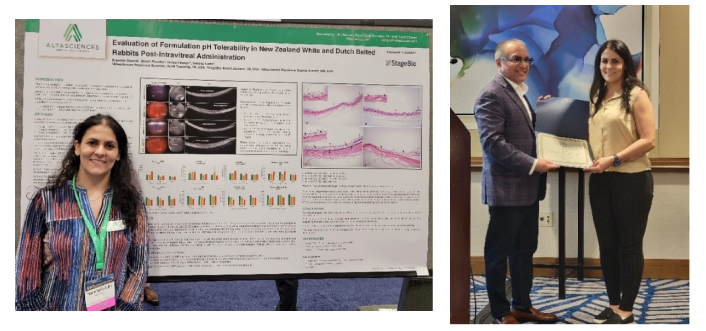Preclinical Research
Altasciences at ARVO 2025: An Eye on the Future of Ophthalmic Drug Development by Gretchen Green

Altasciences recently attended and exhibited at the 2025 Association for Research in Vision and Ophthalmology (ARVO) Annual Meeting, held at the Salt Palace Convention Center against the stunning backdrop of downtown Salt Lake City, Utah—arguably one of the most scenic U.S. conference locations.
Case Study: Two Examples of Successful Automation Integration at Altasciences for Pharmacokinetic Studies
By Martin Rougée, Optimization Scientist, Bioanalytical Operations
Automation offers several advantages to any industry. For a contract research organization (CRO), it can play an integral role in increasing the quality and speed of drug development while reducing costs, repetitive manual tasks, and human error. For biotechnology and pharmaceutical companies, automation can decrease their drug-to-market development time and remain financially competitive in an evolving market.
Highlights From the 17th Minipig Research Forum, by Shanté Jackson

I recently had the chance to attend the 17th Minipig Research Forum (MRF) in Amsterdam—and what an experience! This was my first time attending the forum, and visiting the Netherlands!
Consultant’s Corner—Reflections from a Study Monitor and Director: A Career in Toxicology, by Bill Brock
Some might say a reflective piece like this could come across as sounding “preachy”. Maybe it is. But it is reflective of a long and rewarding career built on the belief that we as scientists need to give back to the field of toxicology, supporting the growth of future leaders.
Highlights From the 2025 Society of Toxicology 64th Annual Meeting With Dr. Marianna Bacellar-Galdino, DVM, MSc, PhD

I had a fantastic time connecting with colleagues, clients, and peers at the Society of Toxicology (SOT) 64th Annual Meeting in Orlando, Florida. As my first SOT experience, I truly enjoyed the vibrant, enthusiastic atmosphere.
Case Study: How Altasciences Overcame Pharmacological Challenges in a GLP-1 IND-Enabling Study
For emerging therapies with pronounced pharmacological effects, thoughtful study design is critical to ensuring reliable and interpretable data.
Hybridization LC-MS/MS for Sensitive Quantitation of Antisense Oligonucleotides in Plasma and Dried Blood Microsamples
Best Practices for Preclinical Dose Range Finding Studies
Dose range finding (DRF) studies are the foundation of preclinical drug development, providing crucial information on safety data to assist in the dose level selection before advancing into to
Inside Preclinical Ocular Research: With Dr. Simone Iwabe, DVM, PhD, DACVO, and Randy Wheeland, BS

Altasciences has been at the forefront of ophthalmic drug development for over 30 years, having completed more than 100 ocular studies to assess the safety of new drug products intended for human use.